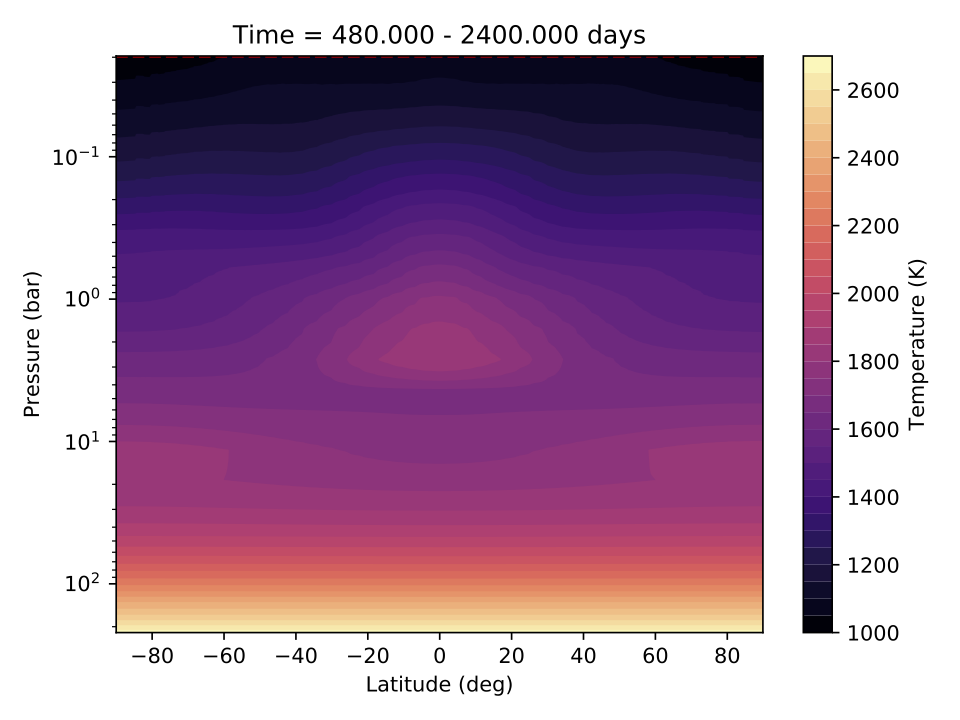-
Notifications
You must be signed in to change notification settings - Fork 13
Python plotting
The mjolnir (THOR/mjolnir/) plotting scripts are written for Python 3 (compatibility with Python 2 still needs to be tested). Most dependencies are pretty standard for science: numpy, matplotlib, and scipy. Additionally, you'll need to install h5py:
$ pip3 install h5py
or
$ conda install h5py
h5py is simply a Python package that allows easy interaction with hdf5 files (THOR's standard output format).
mjolnir.py is set up as an executable for command line, but you'll need to add the path to your environment file. In bash, add the line
export PATH="$PATH:<path to thor>/mjolnir"
to your ~/.bashrc or ~/.bash_profile file, replacing <path to thor> with the actual path to the repository on your system. Probably not the smartest or most pythonic way of setting this up but one thing at a time please. Once that is done, the command to make a plot looks like
$ mjolnir <options> <type of plot>
For example,
$ mjolnir -i 0 -l 10 -f awesome_results -s coolest_planet Tver
where -i, -l, -f, and -s are options flags and Tver is a plot type. The available options flags are
-i / --initial_file <N> number of first output file to open
-l / --last_file <N> number of last output file to open
-f / --file <string> folder containing results
-s / --simulation_ID <string> name of planet (used in naming of output files)
-p / --pressure_lev <N> pressure level to use in horizontal plots (mbar units)
-pmin / --pressure_min <N> pressure minimum for vertical plots (mbar units)
-slay / --split_layer <N> splits conservation data into "weather" and "deep" layers at this pressure (mbar units)mjolnir averages the data over time for the entire range of files read in. So with -i 0 and -l 10, files 0-10 will all be read in, and the plotted quantities will be averaged over all 11 snapshots in time. If you want to plot one instant in time, just set -i and -l to the same value. The averaging process can get quite long because the data is interpolated in many ways before averaging. Be careful if you are passing mjolnir more than ~50 output files.
There are three basic types of plot mjolnir can make (plus a few other special ones): vertical, horizontal, and profile. Vertical plots are averaged zonally and temporally, resulting in contours on a latitude vs pressure grid. Horizontal plots are averaged only temporally, and plotted at a given pressure level on a latitude vs longitude grid. Profile plots show quantities along single columns or average columns, as a function of pressure.
The -p option is used only by the horizontal plot types and is simply the desired pressure level to be viewed. The -pmin option is used only by the vertical plot types and is just the lowest pressure level to be plotted. For vertical plots, mjolnir will plot a dashed line representing the maximum pressure at the top of the model--thus data plotted above this line requires some extrapolation and should be viewed skeptically.
Current vertical plot types are
Tver time- and zonally-averaged temperature
uver time- and zonally-averaged zonal wind speed
wver time- and zonally-averaged vertical wind speed
PTver time- and zonally-averaged potential temperature
PVver time- and zonally-averaged potential vorticity
stream time- and zonally-averaged mass streaming functionAn example of time- and zonally-averaged vertical plots are below. These show the temperature and zonal wind for the deep hot jupiter benchmark:


Current horizontal plot types are
Tulev time-averaged temperature and horizontal wind along a pressure surface
ulev time-averaged zonal and meridional winds along a pressure surface
PVlev time-averaged potential vorticity along a pressure surface
RVlev time-averaged relative vorticity along a pressure surface
tracer time-averaged molecular abundances along a pressure surfaceCurrent profile plot types are
TP temperature-pressure profiles drawn from all over the grid
wprof vertical wind vs pressure averaged over 4 quadrants (useful for synchronous rotation)